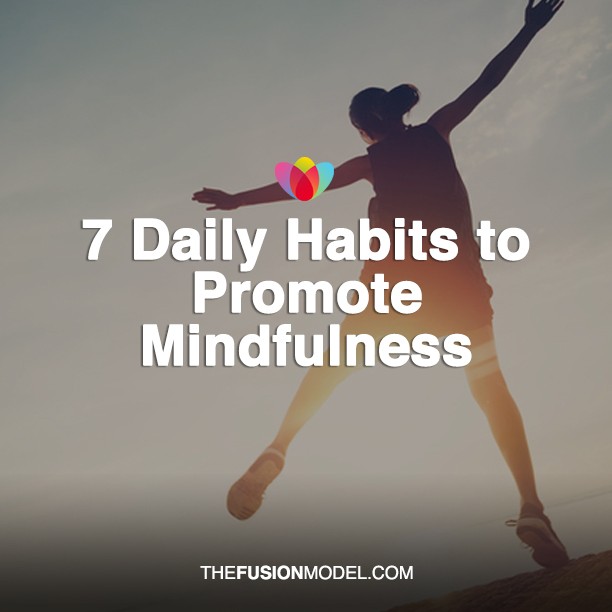Back when we were kids, our parents kept telling us to mind our manners – or at least mine did, and for the sake of family reputation, mind you. All through high school and college, I spent my days minding my own business, along with my p’s and q’s – and now that I’m old enough to have a mind of my own, the media is saying that I ought to do a different type of minding for the sake of the planet, and my own, too. How’s anyone supposed to live life fully with all those Should’s and Ought to’s in the air, right? Sorry to burst your bubble there: mindfulness has nothing to do with what other people expect you to do. What it can do if practiced regularly, though, is help you get the most out of the potential for greatness you were born with – and you can take my word for it.
A Case of Mind over Matter
For me, the whole mindfulness thing used to be a New Age fad, a bubble that would pop as soon as it’d gone pop – and then it went and nearly saved me from a full-blown nervous breakdown.
I’d been struggling with anxiety, depression, and sleeping disorders for years. I’d tried CBT, TA, OT, hypnosis, and a host of other mental and spiritual healing methods; all of them worked – for a time, at least, but mood swings, panic attacks, and insomnia would eventually come back to claim their toll. My batteries were running on empty and the mental fuse was burning up fast. At night, I lay awake trying to make myself go to sleep before dawn, angry with my own mind for refusing to go into shutdown mode. During the day, I could almost see my drowsy self running a red light and into a storefront. Back then, my brain was either blank or besieged by ruminations, and I dreaded each new morning because it meant I wasn’t just dreaming it all.
One day, a friend suggested I sign up for yoga. At that point, any suggestion that held a slightest trace of potential to help put an end to my sleepless despair was a great idea. A yoga studio had just opened a few blocks away from my flat, and I decided to give it a go, despite my general dislike of trends that fit the New Age bill. One thing led to another: yoga did an amazing number on my focus, but it required dietary changes, and a few lifestyle tweaks too, and before I knew it, I was living a life more mindful than I could ever have imagined. Right now, I’m as fit as a fiddle, my mood’s stable, I sleep like a log every night, and the only thing I regret is not jumping on the mindful wagon earlier. But do you know exactly what mindfulness is, and how you can introduce it to your own life?
The Real Mindfulness Deal
The practice of living fully in the present moment and cultivating awareness of an individual’s impact on the environment and other beings’ lives, mindfulness is a much sought-after asset today, and for a good reason, too. A blend of physical, mental, and spiritual practices, mindful living holds the potential to improve focus and sleep quality, relieve stress, lower blood pressure, prevent and treat a host of physical and mental ailments, and dial up overall life quality. Looking at the long list of benefits behind mindful living, it comes as no surprise to hear it’s growing increasingly popular in the business arena, too. By improving strategic and analytical skills, mindfulness practices are hip even among fat corporate cats, many of whom peg their success on living (and apparently doing business, too) in the mindful Here and Now.
That sounds swell, but is there a shortcut to flipping life over and onto its mindful side, you may wonder? As a matter of fact, there is. Just like any lifestyle change, the shift to living life fully and enjoying it as it unfolds can be achieved faster and more easily if you include mindfulness-conducive habits into your everyday agenda.
Take Stress out for a Walk
Remember Aristotle and his Peripatetic followers back in ancient Greece? Those guys were spot-on: walking does a splendid number on both your cognitive and physical shape. Various studies have shown that walking can soothe the mind, relieve stress, improve memory, and unleash creativity, while shifting the focus to the present moment, boosting brain volume, and keeping Alzheimer’s and dementia at bay for a few years longer. (Bonus point: I’ve found that a brief walk around the park is a cool way to spend a break at work and quash the midday slump in stride.)
Every Breath You Take
Conscious breathing is the core of mindfulness practices, so if you’re running out of breath every now and again, it’s high time you paused to check your sniffer. By shifting your attention from external or internal goings-on to your breathing, you’ll interrupt mental discourse effortlessly, anchoring yourself in the Here and Now instead of pondering on the past or dreading the future. By bringing your awareness to your breath, you’ll be able to prevent anxiety buildup and keep your mind clear, your lungs full of oxygen, and your life as fulfilling and as mindful as it can be.
No Multitasking, Please
Despite what your boss may say, multitasking isn’t a byword for productivity; it’s the opposite of it. By dividing your attention to many tasks, you’ll get less work done than if you focus on one assignment at a time. On top of improving at-work output and concentration, unitasking will boost your cognitive function, keep stress in check, and prevent errors and oversights that often occur during workflow, when tension hits the roof.
Bust a Few Asanas a Day
Meditation and yoga go hand in hand, and while you can have just the asanas or the mindfulness Ommm drill, the switch to mindful living will go much faster if you do them both. Two weeks after I’d taken up yoga in Sydney, I noticed my focus and mood picking up and the brain fog starting to lift. Focusing on your posture, muscles, and movements is a powerful mental detox tool, and I was happy to learn that yoga can be practiced outside the studio, too. That means you don’t have to skip your yoga practice during the holidays – you can do your asanas and flows on the beach!
Lay off the Smart Screen
Internet and media addiction are all too real a problem for both adults and kids these days, and many people aren’t even aware of the sheer amount of time and energy lost to all that screen time. If you want to re-connect with your true nature and the environment, you’ll have to lay off the web and give social networks a heave-ho over real-life entertainment and time with your loved ones. Cool perk: you’ll realize your day is actually much longer than you thought, when you’re not wasting your time checking your Facebook or Twitter Newsfeed every hour.
Let Creativity Guide You
The tech detox will set your imagination in motion, and you’ll be able to harness mental energy and create new things every day, which is another habit that will reinforce the roots of a mindful life. Set aside an hour a day to unleash your creative potential: it will heighten your awareness and allow you to achieve the state of peak flow within weeks.
Mindful Bites on the Menu
You can’t have your mindfulness cookie and eat it without cleaning up your dietary act. To speed up the shift to mindful living, drop gluten- and sugar-laden food from the menu, increase intake of fresh fruit, lightly boiled vegetables, and wholegrain, and don’t skip healthy fats and complex carbs if you want to achieve peak mindfulness any time soon. I took my yoga teacher’s cue and I tried veganism a year ago, in order to boost energy levels and bust stubborn fat; I haven’t gone back to meat and dairy yet.
As much as I loathe overturning my beliefs, the mindful living agenda isn’t just a short-lived fad. I’ve walked the mindful mile, and I can tell you it’s the most rewarding path I’ve taken in my life so far. You don’t have to take my word for it, though; you can (and by all means should) try it for yourself and see how far the journey takes you.




